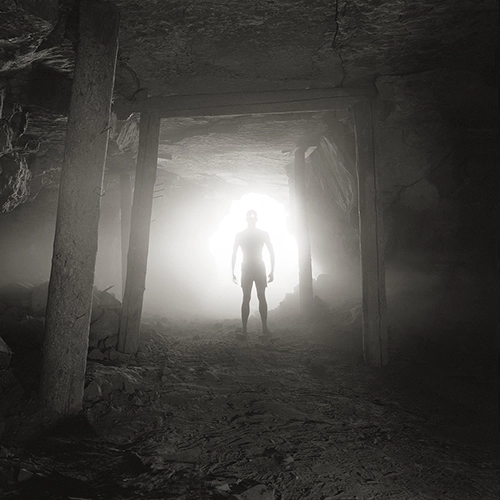Eric Kunsman is a renowned photographer and educator whose work explores the intersection of history, culture, and social commentary. Known for his thought-provoking series and meticulous attention to detail, Kunsman captures powerful narratives that challenge conventional perspectives. We asked him a few questions about his creative process, inspirations, and the stories behind his most compelling projects..
All About Photo: You studied Book arts printing as well as graphic arts and media but in the end why did you choose to pursue a career as a photographer?
Eric Kunsman: I studied photography before my Master’s in Electronic Publishing and my MFA in Book Arts & Printmaking. My two degrees in photography are Biomedical Photography and Fine Art Photography from RIT. I studied in both areas because they complemented my photographic practice. My MS in Electronic Publishing was when digital photography was in its infancy, and I wanted to control my printing back in 1999 when I had three Iris printers. My thesis was titled High-Density Monochromatic Printing Utilizing Inkjet Printers, and the degree was very geeky. However, that program taught me to control every aspect of my printing workflow.
My printmaking and book arts degree from the University of the Arts taught me how to slow down and enjoy the process because it was the opposite of my education at the Rochester Institute of Technology (RIT). I often joke that the two educational institutions forced me to utilize my left and right brain. This is because of the different ways of thinking, whether about technology (the left brain) compared to thinking about the process and conceptual reason (the right brain). I'm utilizing the book arts & printmaking degree in my photography practice through my studio. Within the walls of my company,
Booksmart Studio, we have many wide format printers, a bookbindery, and a darkroom where I still work with film for all these projects. I would not be as successful if I didn't slow down to enjoy the photographic process and pause to think about what I photographed, as I am waiting to see if I created the concept once my film is processed. That reflection time is why I say it slows me down; yes, I take fewer photographs when I’m working with film compared to working with the digital camera, but for me, it's that time of missing the latent image that slows me down and allows me to think critically about why I created that photograph.
Many people don't realize that I also still print historical photographic processes such as Kallitype, Platinotype, Platinum, Gum Bichromate, and other processes within my studio for my landscape photography. Most people do not know about it because they now see me as a payphone photographer. My company, Booksmart Studio, ultimately combines my RIT and the University of the Arts degree. When you walk in the door, you can see that instantly, as in the bookbinding area, everything is done by hand. I have complete control over color management in the wide format area I teach at RIT. I manage our color management in-house within every facet of my studio and help other print studios. Finally, the darkroom allows me to work in any process I wish, and I am fortunate to be able to produce any work that I could imagine, all under the roof of my studio.
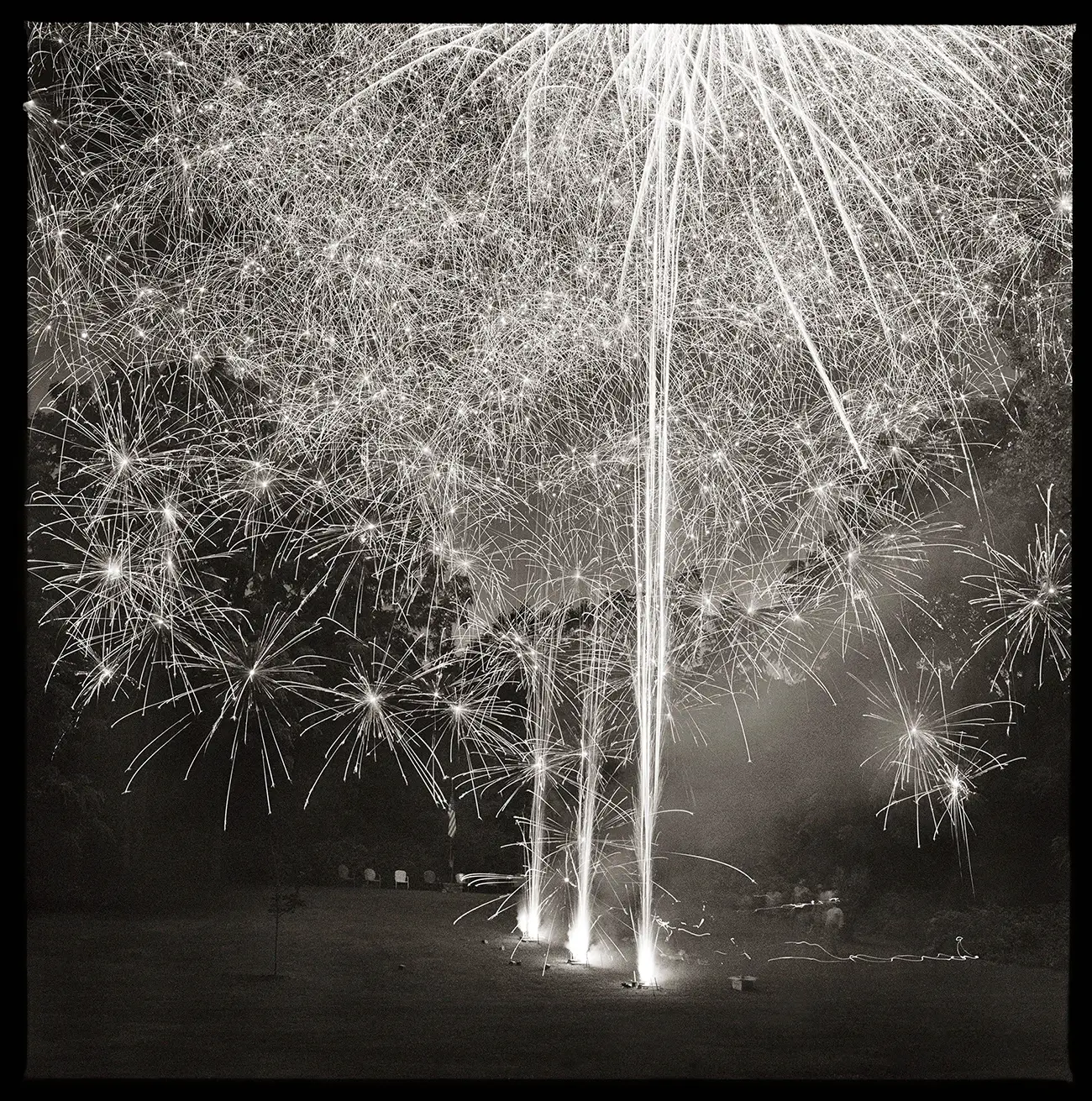
4th of July, Palmyra, NY © Eric Kunsman
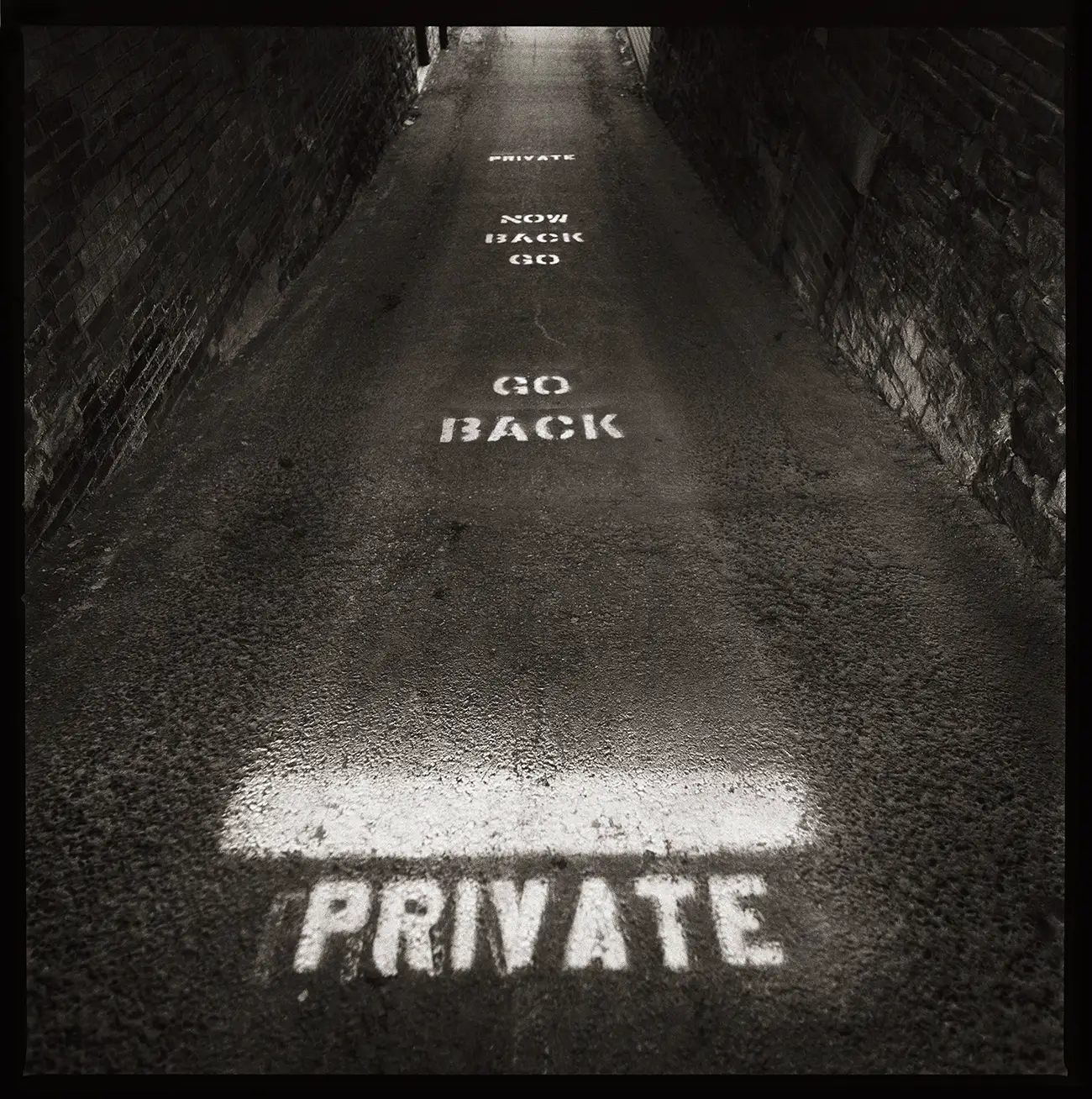
PRIVATE | Now Back Go Go Back | PRIVATE © Eric Kunsman
My initial encounter with photography was when I was in grade school, and I had a plastic Ansco point-and-shoot camera. I remember taking it on a field trip to the zoo and photographing animals. Later in high school, I took my first photography course in Bethlehem, PA, and was introduced to the work of
Walker Evans. From that point on, my life has revolved around photography.
Do you remember your first shot? What was it?
I am unsure if it is my first shot, but my first memory of a photograph I enjoyed is one down the street from my parent’s house. It was winter, and a fresh coat of snow had fallen, and there was a tree that had been leaning into the water for a few months. With the stillness of the water and no wind after the storm, the reflection of the snow on that tree in the water is something I enjoyed. It is funny to think that was 32 years ago.
How did you get to your current artistic practice?
Honestly, I followed the many forks on the road. Some were good, and others were dumb, but ultimately, they led me to create the work I am today. By starting my business, Booksmart Studio, I have enabled myself to create any photograph I want without relying on others.
Who or what influenced you?
From an early age, Walker Evans was the historical photographer who was most important to me, followed by the work of
W. Eugene Smith. Yes, I look at other photographers' work, but those two photographers truly encompass how I visualize my final prints and images.
Two photo educators from RIT who have been influential in my work are Willie Osterman and Owen Butler. Each of them has helped with various forks in my photographic education career. However, the most influential person in my career and life was Lou Draper, whom I had the privilege of studying with for one year at Mercer County Community College. I learned more about myself as a person and human being in that year than in any other period. I credit Lou with being the photo educator, photographer, and human being that I am today because I don't think I've ever respected another person in my life as much as I did Lou. Lou was not only an incredible photo educator and photographer, but he was also a very supportive person. He helped form
Kamoinge, which has been very important to black photographers for decades. He was instrumental in many photographers’ careers through that organization and his classroom.
What details do you believe make the best photographs? How do you go about focusing on them in your work?
A photograph that doesn’t require an artist’s statement or explanation allows the viewer to apply their interpretation and life experiences to the picture. Therefore, camera gear, technical considerations, composition, and aesthetic considerations are just the tools we use to share our experiences with others. However, when you have a series of photographs and other complimentary visuals, they should be able to explain the thesis behind your work and guide the audience.
I focus on all technical considerations to ensure the viewer does not evaluate the process, which detracts from the aesthetics. I also ensure each image and element has a purpose and can lend itself compositionally within a sequence. Ultimately, I enjoy working with curators and allowing them to create an exhibition that works in their space from the wide selection of images that I have created. This allows me to learn from every exhibition and curator about what they see in my work.
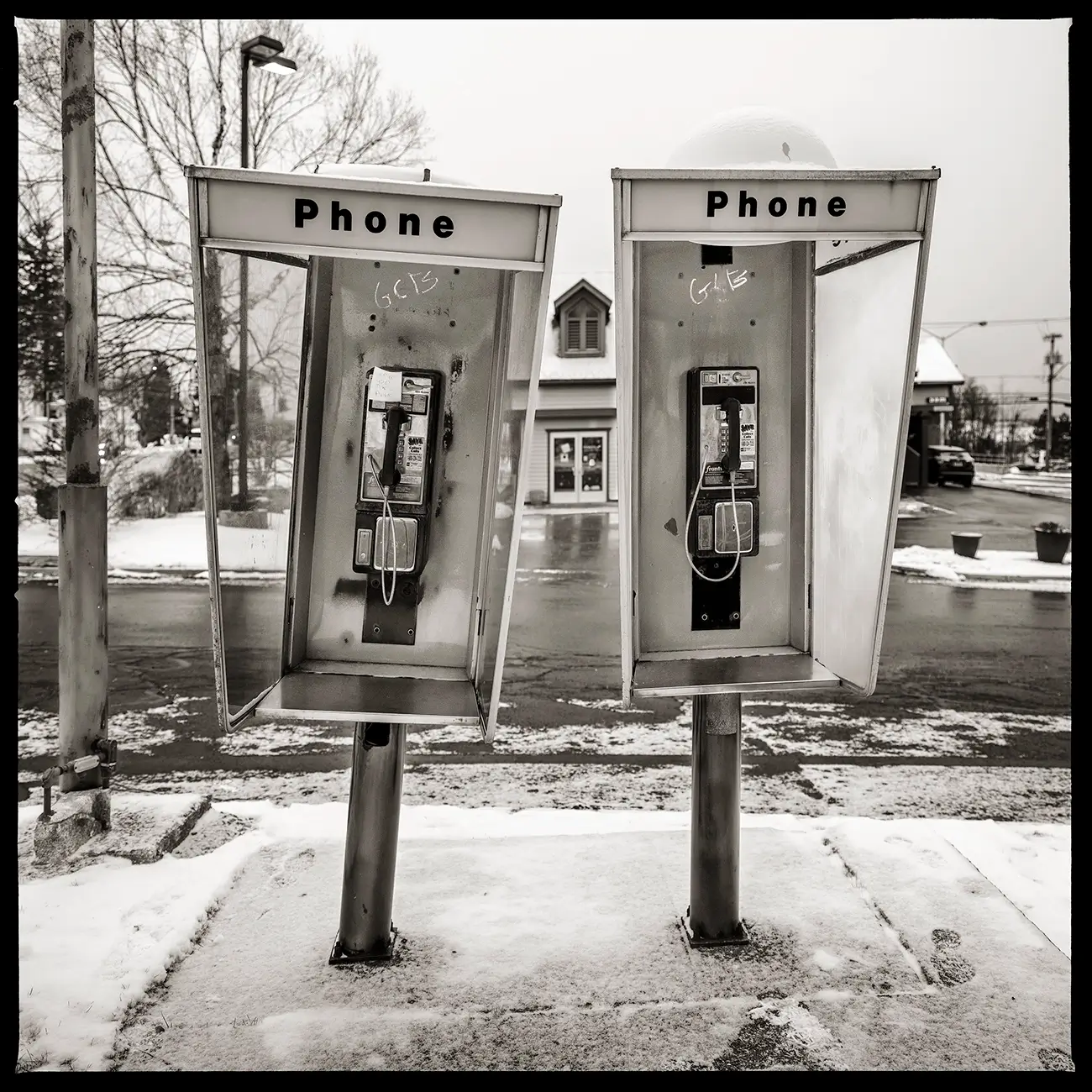
585.671.9880 & 585.671.9976– 185 West Main Street, Webster, NY 14580 © Eric Kunsman
Honestly, all of my photography projects are important to me for various reasons and have shaped the person, educator, and person I am today. I am often asked which of my payphone photographs is my favorite; with that series, I usually joke that each payphone is like one of my children. I can remember exactly where each payphone is located and frequently have an experience I associate with that environment/location.
What makes a good picture stand out from the average?
A successful photograph is one that keeps the viewer's eye for more than three seconds, even in this era of smartphones and ADHD and ADD. I also discuss with my students and clients that a viewer should be able to enter the photograph when the color, contrast, and size are correct for the image or series.
How do you educate yourself to take better photos?
I educate myself by living in photography daily, whether as an educator, mentor, Master printmaker, parent, or photographer. I learn as much from my students as I teach them and have surrounded myself with a community I believe in because my motto is that relationships MUST be a two-way street with a give-and-take balance. If I feel I am putting out more energy than receiving in return, I must adjust that relationship. This has become VERY important in allowing me to be inspired to create new work and be the best person I can be. I also have an extensive photography book library that I can visit when needing to revisit photography with fresh eyes. Lastly, by attending portfolio reviews, I can learn about my projects and the work others are doing worldwide.
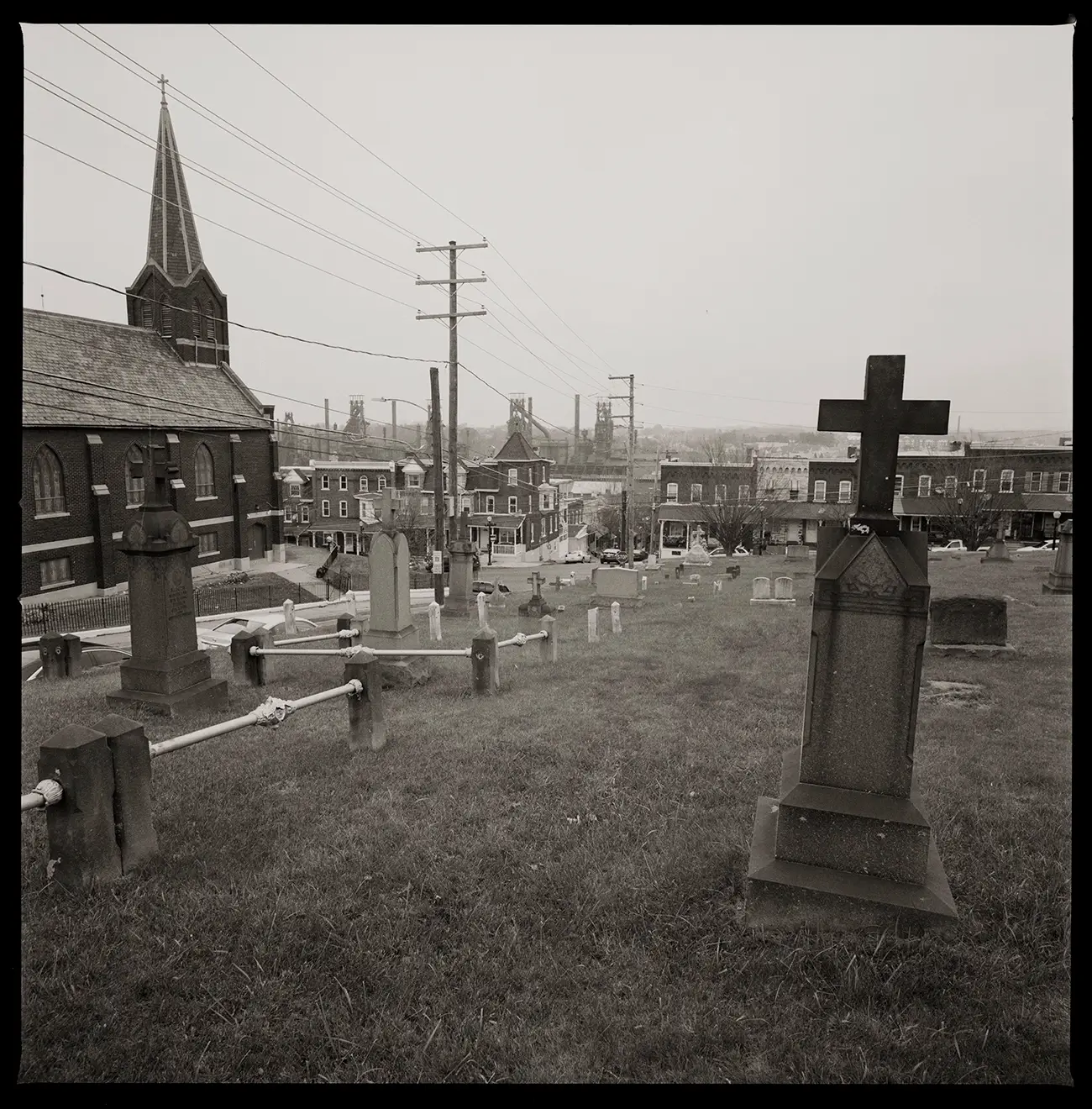
Bethlehem, PA © Eric Kunsman
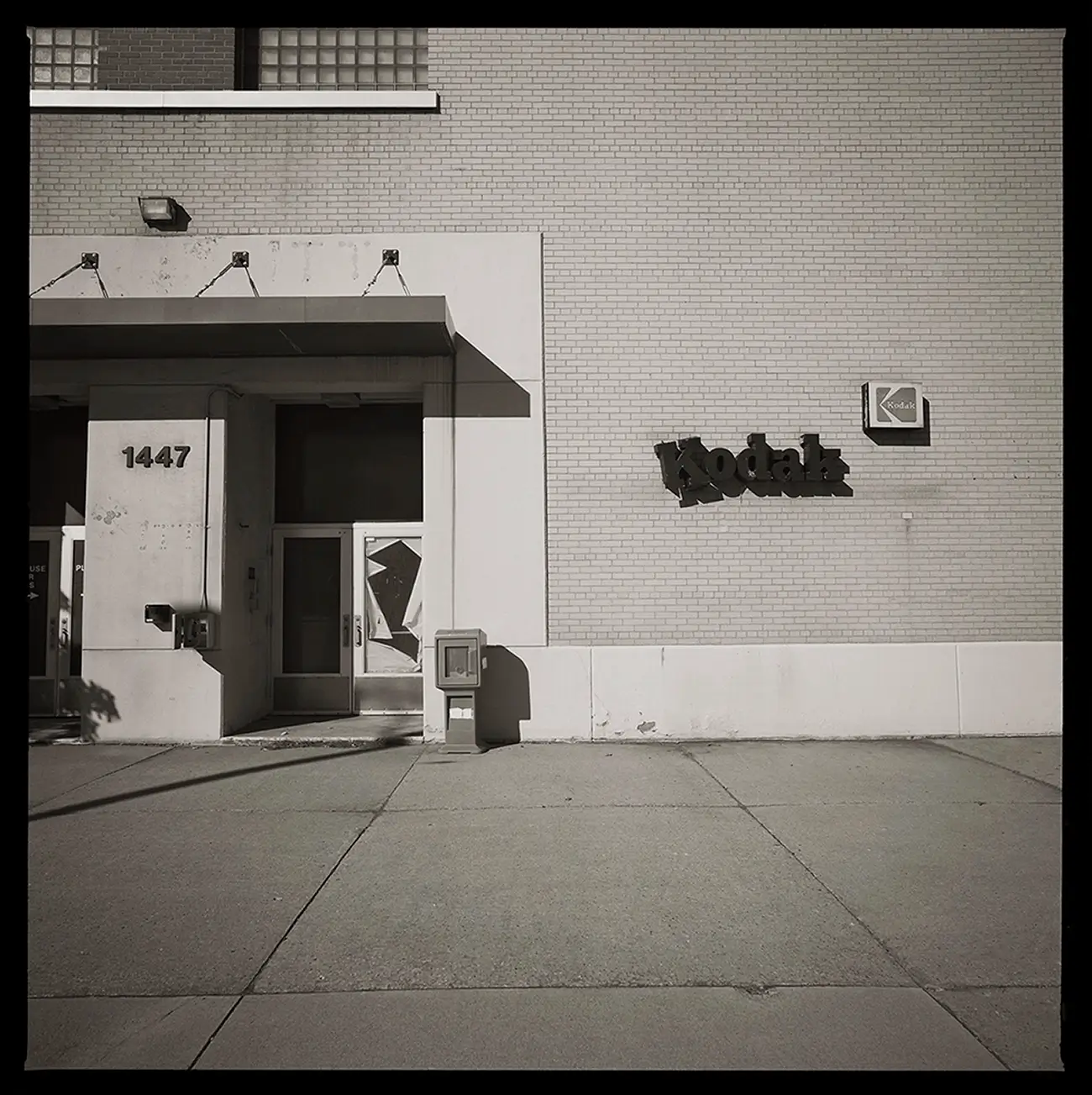
Kodak Hawkeye Plant, Rochester, NY © Eric Kunsman
A few curators have labeled me a romantic social documentary photographer because of the way I utilize black and white. I love the control of the visual hierarchy that black and white provides while also forcing the need to control every element in your photograph, as Lou Draper instilled in me. Also, my payphone projects allow each image to be judged for its environment and surrounding elements without seeing the dilapidation of some urban and suburban scenes. Often, many of my pictures also pay tribute to the
Farmland Security Administration (FSA) photographs, which were very influential in my formative years.
How did the idea of Felicific Calculus originate?
Felicific Calculus, which is about documenting payphones, started in Rochester, NY; initially, I focused only on Monroe County, NY, because I moved my studio from the neighbor of the arts in Rochester, NY, to a different area that a lot of my colleagues and friends were labeling a war zone. I then tried determining why they judged the region and its people. I observed three things as social markers: corner stores, neighborhood bars, and an abundance of payphones, so I started documenting the payphones. Then, I began to look at the relationship of the socioeconomics, and I was educated on the fact that people were still utilizing payphones in 2018. This developed into an extensive project that is still ongoing and has now expanded into chapter 2, which is titled Life-Lines Throughout the United States. I have been documenting as I travel for my exhibitions or portfolio reviews throughout the US, and I'm lucky enough to have photographed in over 20 states.
This is why I feel that I'm more of a reactionary photographer than somebody who comes up with an idea and then tries to execute it. I have several other projects I'm working on, and again, these projects are still ideas that I'm reacting to and trying to flesh out. I have no true definition or artist statement about them at this point.
My approach to educating people is through my exhibitions, discussions, and publications to get the work out into the community and not only live within the gallery walls. The debate about the issues my project brings up needs to be started between everyone from all walks of life, as many people are losing access to communication. If the work piques someone’s interest while viewing it as obsolete technology with beautiful compositions, lighting, and all the technical control I've learned through my career. I see that as a gateway to hopefully having them visit an article or my
website to learn more about the project’s purpose. On my website, people can see maps that compare different socioeconomic data within Rochester, NY, in relation to payphone locations. Individuals can also see my
videos of my collaborators, who are social scientists, discussing the statistics of the poverty situation in Rochester, NY, and some of the research methods being used.
This only comes forward by talking to different colleges and university groups, where I like to exhibit, and having discussions with students from sociology classes, photo classes, and other related social science courses.
One of my concerns is thinking outside the box on how we get the community to engage in each of the exhibitions on a visual story that may have a disconnect to their region. That's why, for each of the seven solo shows I've had for this work, we have a community collaboration where we ask the community to go out and photograph different social markers. Until now, each community has had enough payphones, so we have focused on payphones. Individuals will submit their photographs, which are printed and added to the gallery walls, along with cross streets or addresses so that we can later map that area payphones and have an open dialogue about some of that community's biases by which places they visited more often.
Again, for me, the photographs are an entryway to start the discussion, and without the discussion, the pictures are meaningless and become beautiful images of obsolete technology. Therefore, it is my responsibility to ensure that the conversations are starting, and I have also used social media as a platform to do so.
Because I've been educated, my team of collaborators is creating a project called ‘Good Phones. ' This project involves taking old payphone housings and converting them to free phones for those needing access to communication through Voice Over Internet Protocol (VOIP). We will provide free voicemail accounts across the entire network that individuals can access on any of our phones. We are focused on breaking down some of the race and class barriers associated with using payphones.
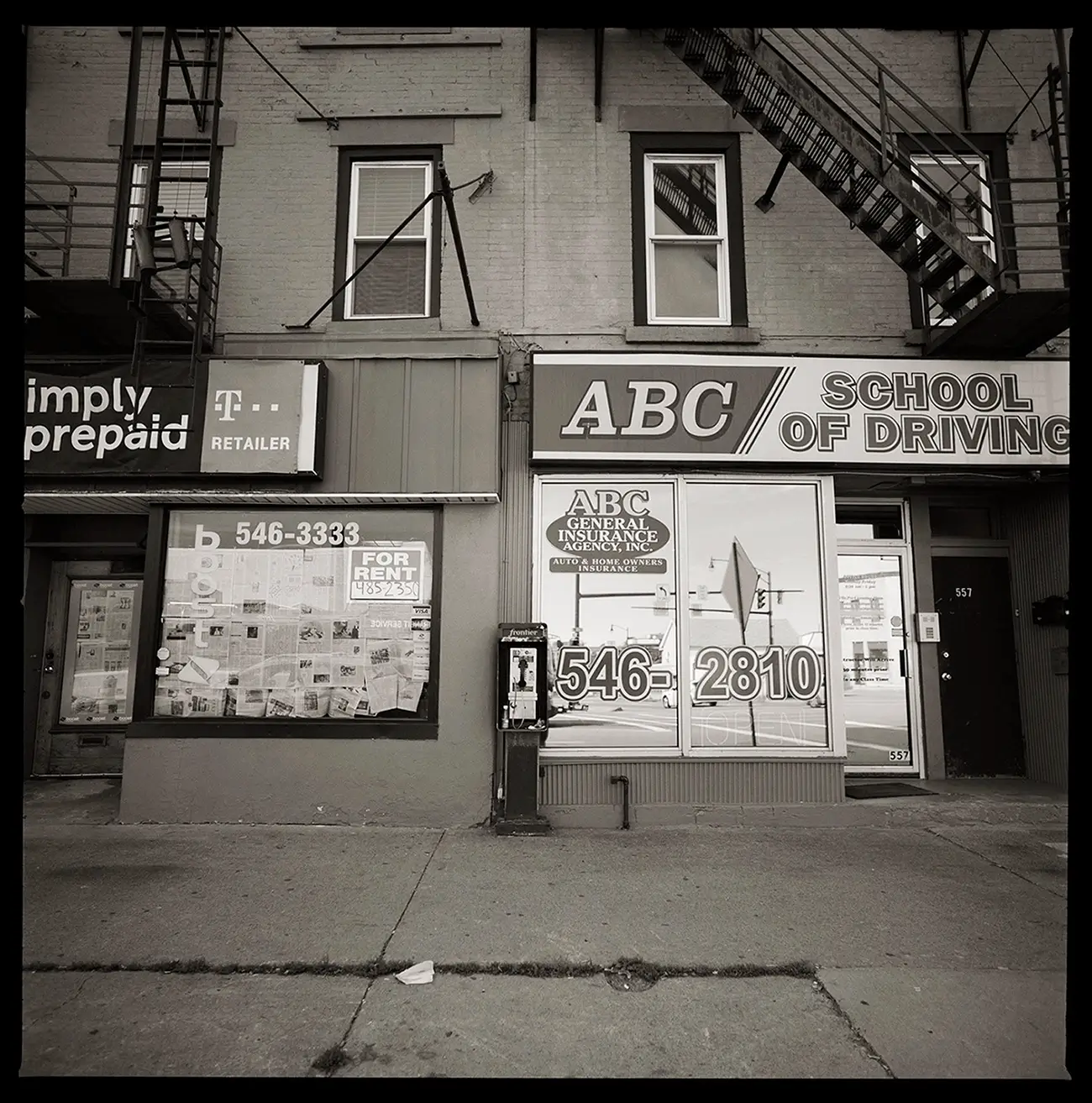
585.232.9384 – ABC School of Driving, 557 State Street, Rochester, NY 14608 © Eric Kunsman
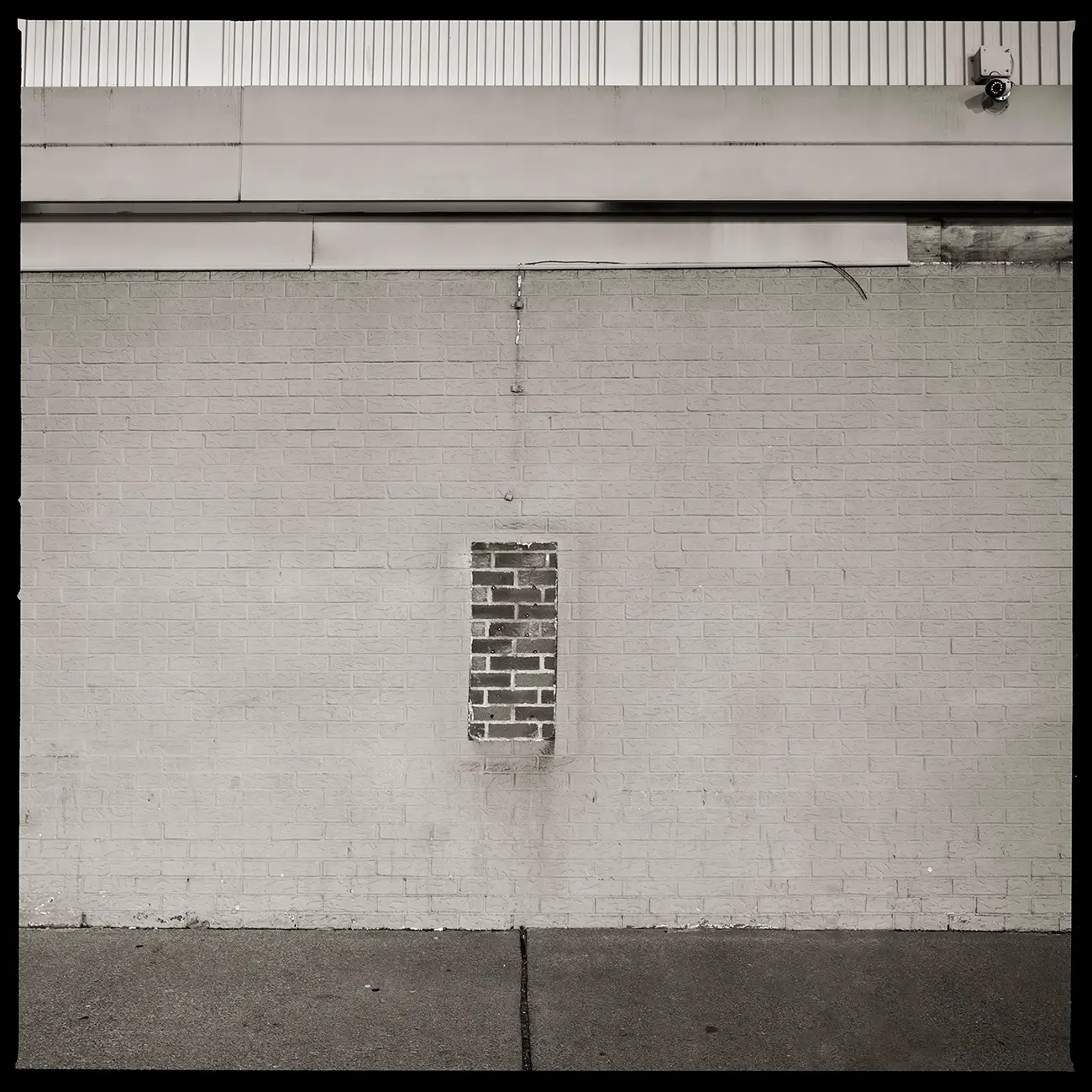
585.232.9429- Dunkin Donuts, 300 Monroe Ave, Rochester, NY 14607 © Eric Kunsman
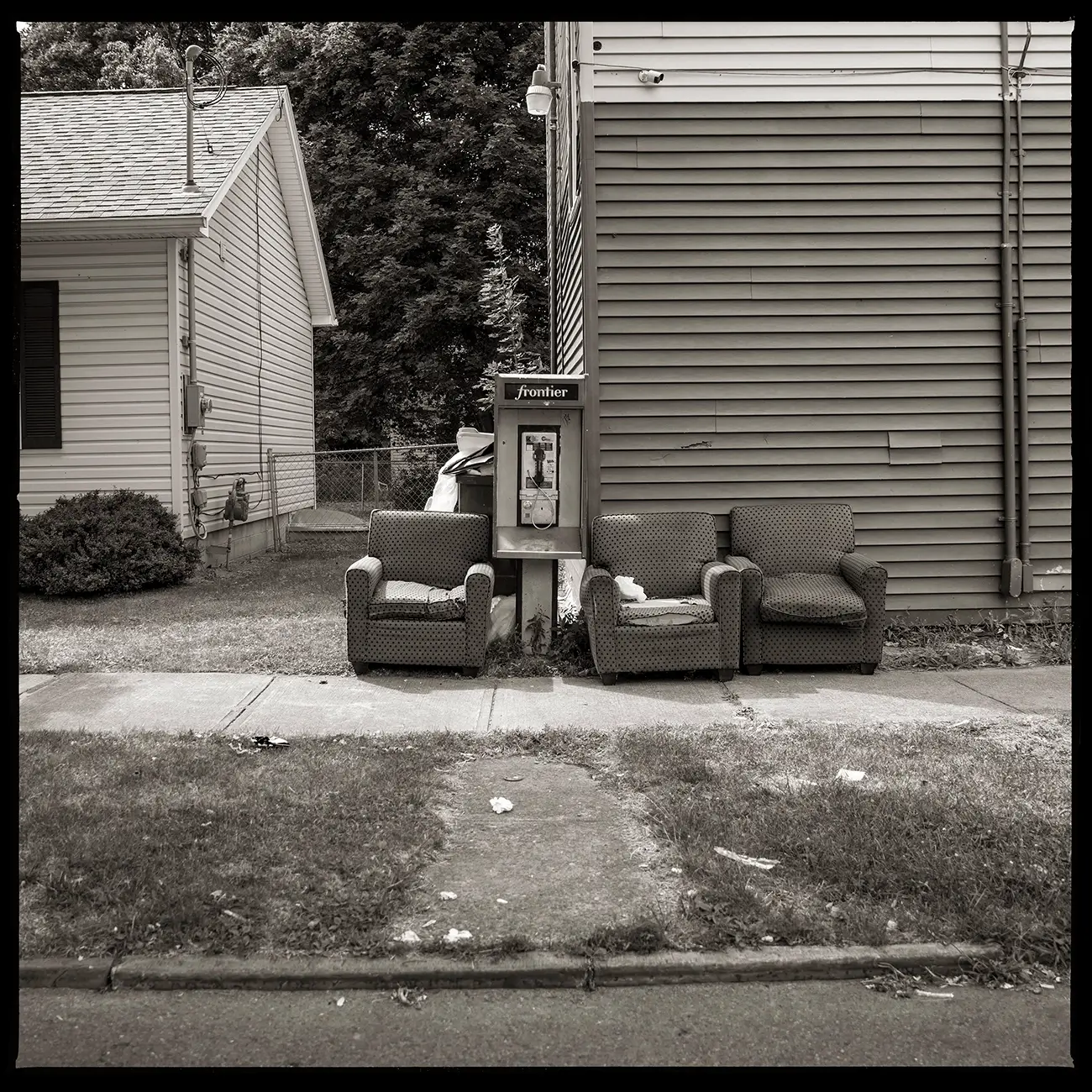
585.235.9196– Grape and Orange Mini Mart, 111 Orange Street, Rochester, NY 14611 © Eric Kunsman
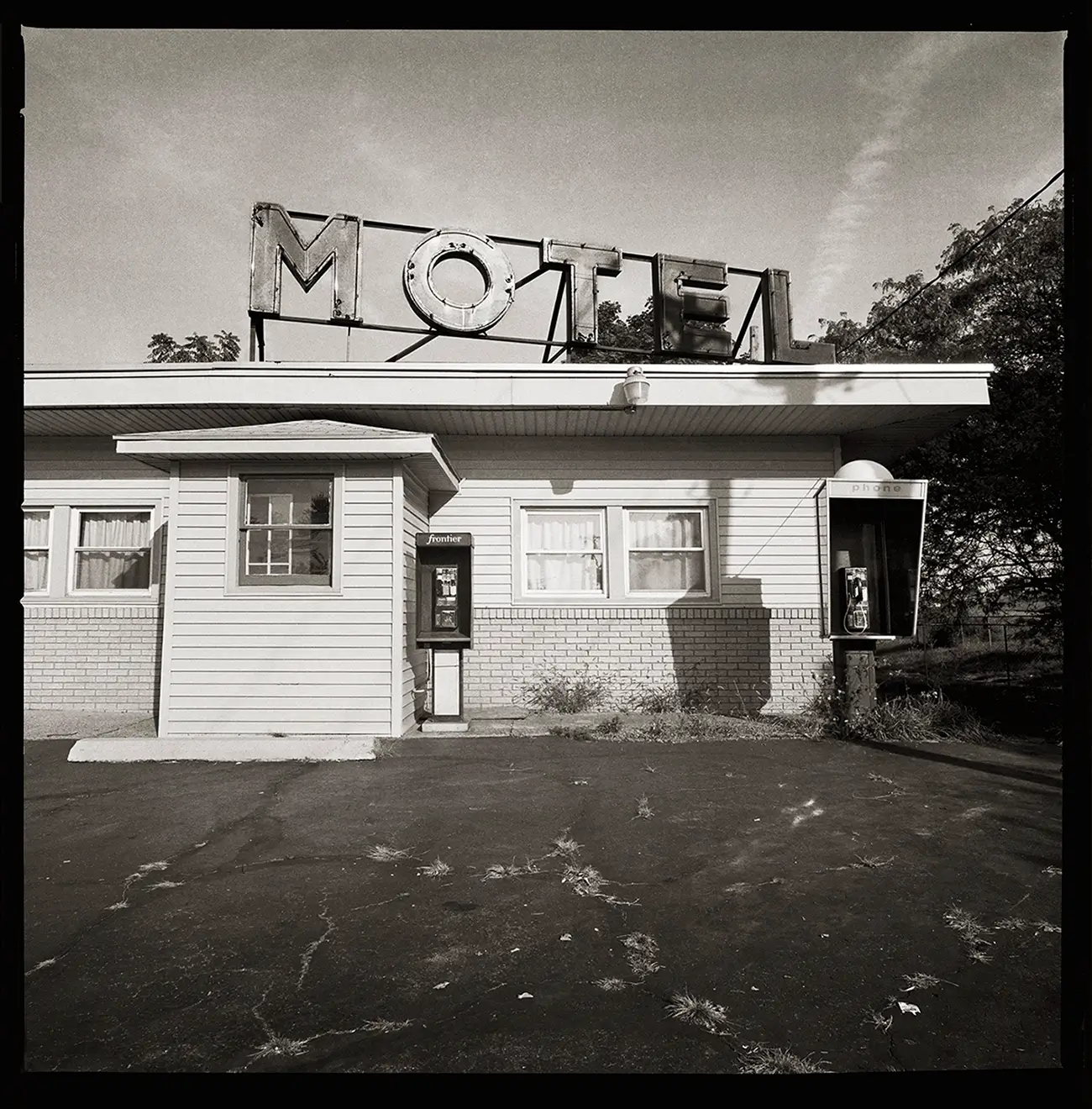
585.235.9340 & 585.235.9923 – 490 Motel, 360 Mount Read Boulevard Rochester, NY 14611 © Eric Kunsman
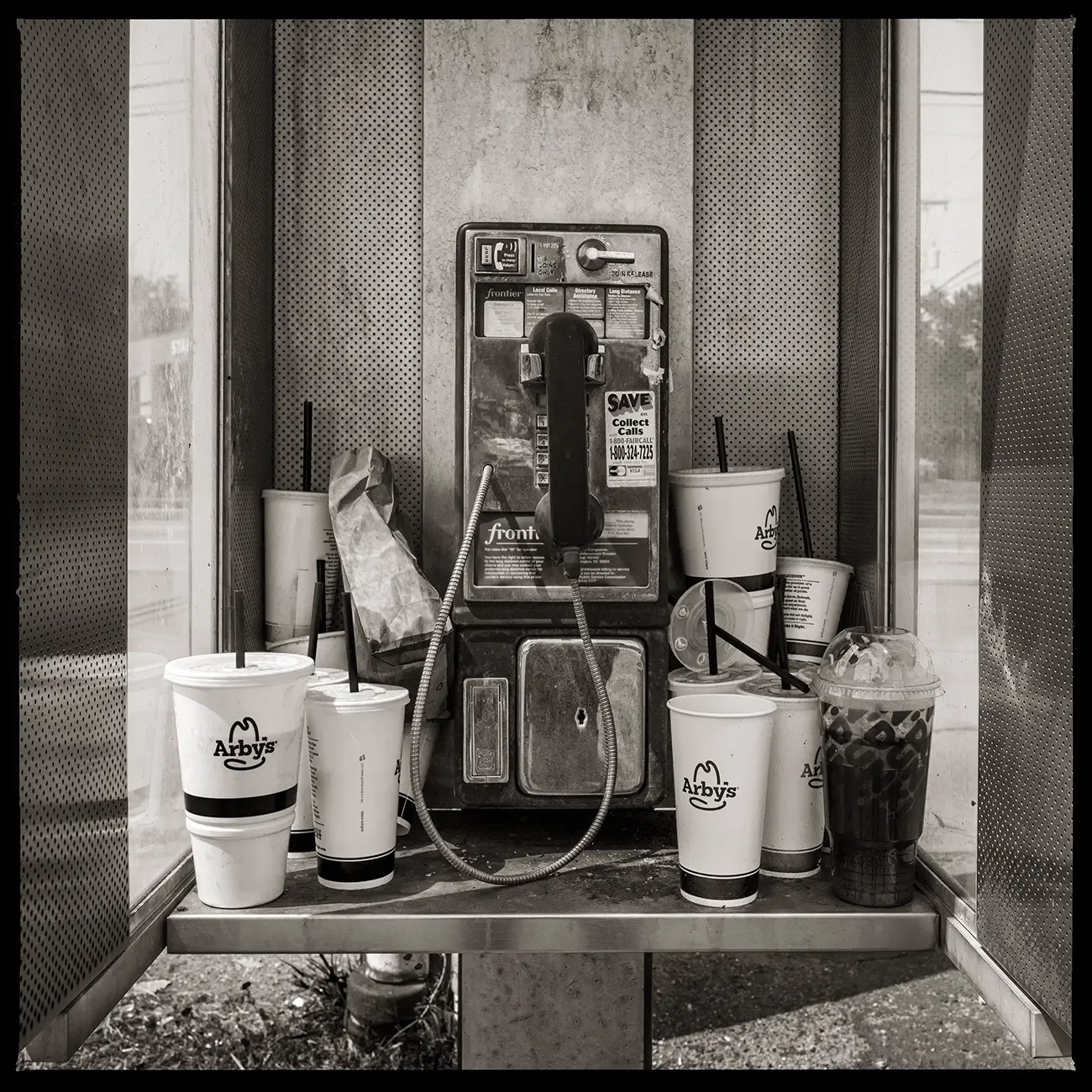
585.427.9848– Stoney’s Plaza, 2852 West Henrietta Road, Henrietta, NY 14623 © Eric Kunsman
The number one response is that they had no idea people are still using payphones in Rochester, NY, and how bad the poverty situation is in their own community. This is often because of the prejudgment people have applied to the city and the narrative the local media has created about our city. I have enjoyed that the biggest takeaway from the Rochester community is more about the socioeconomic data and audio stories I am providing beyond my photographs. Often, individuals state, “I thought they were only photographs of obsolete technology and documenting them before they were gone.” Then, individuals send me emails or texts about payphone locations within and outside our county.
Do you keep on adding new images?
Yes, I continue to resurvey many of the payphone locations throughout Rochester. Since 2019, I have also been working on Chapter 2, Life-Lines Throughout the United States. I have been recording payphones throughout the country as I travel for portfolio reviews and the opening of my solo exhibitions. I have been able to photograph twenty-seven states throughout the United States.
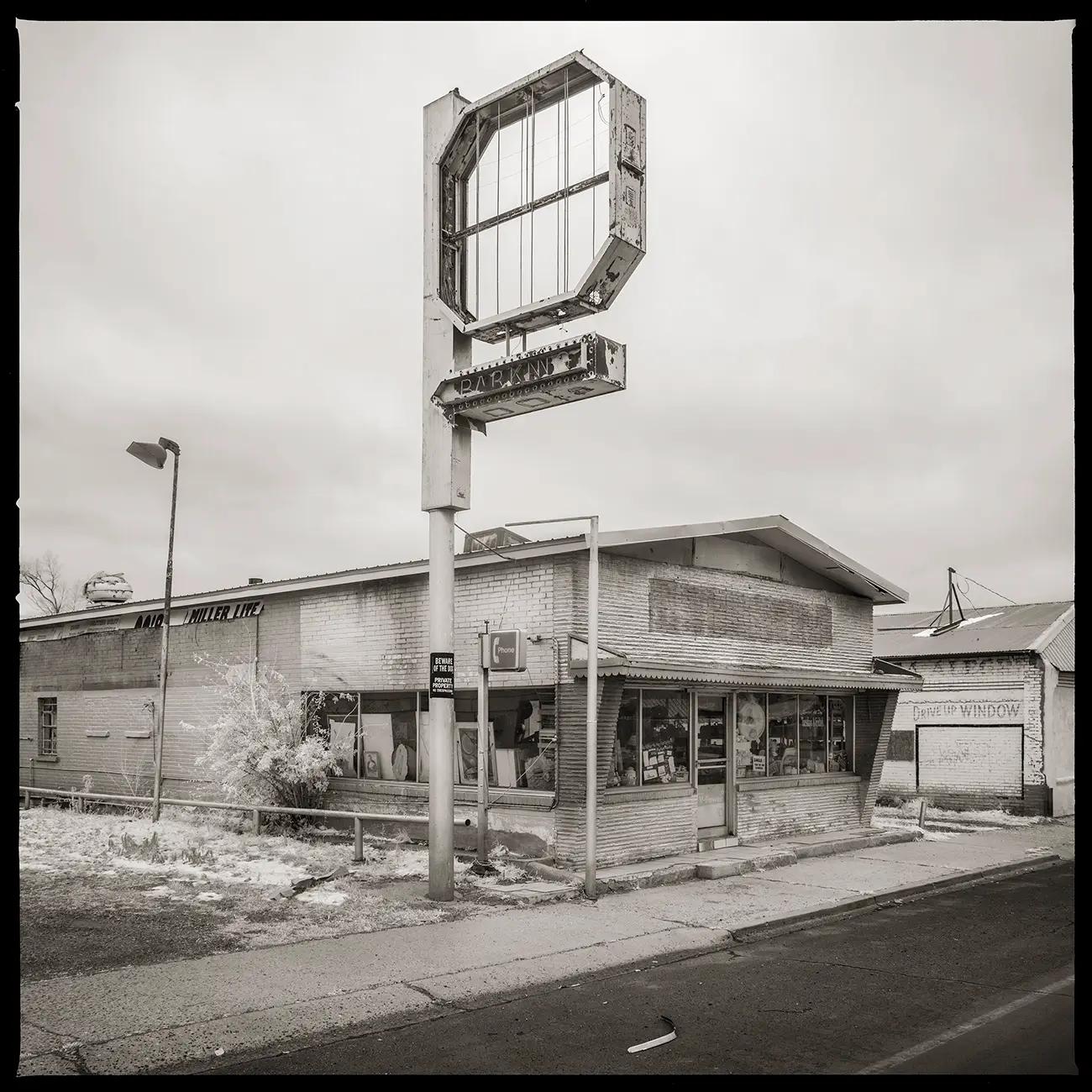
Unknown Number- 85 Cafe, 1140 Grand Avenue, Las Vegas, NM 87701 © Eric Kunsman
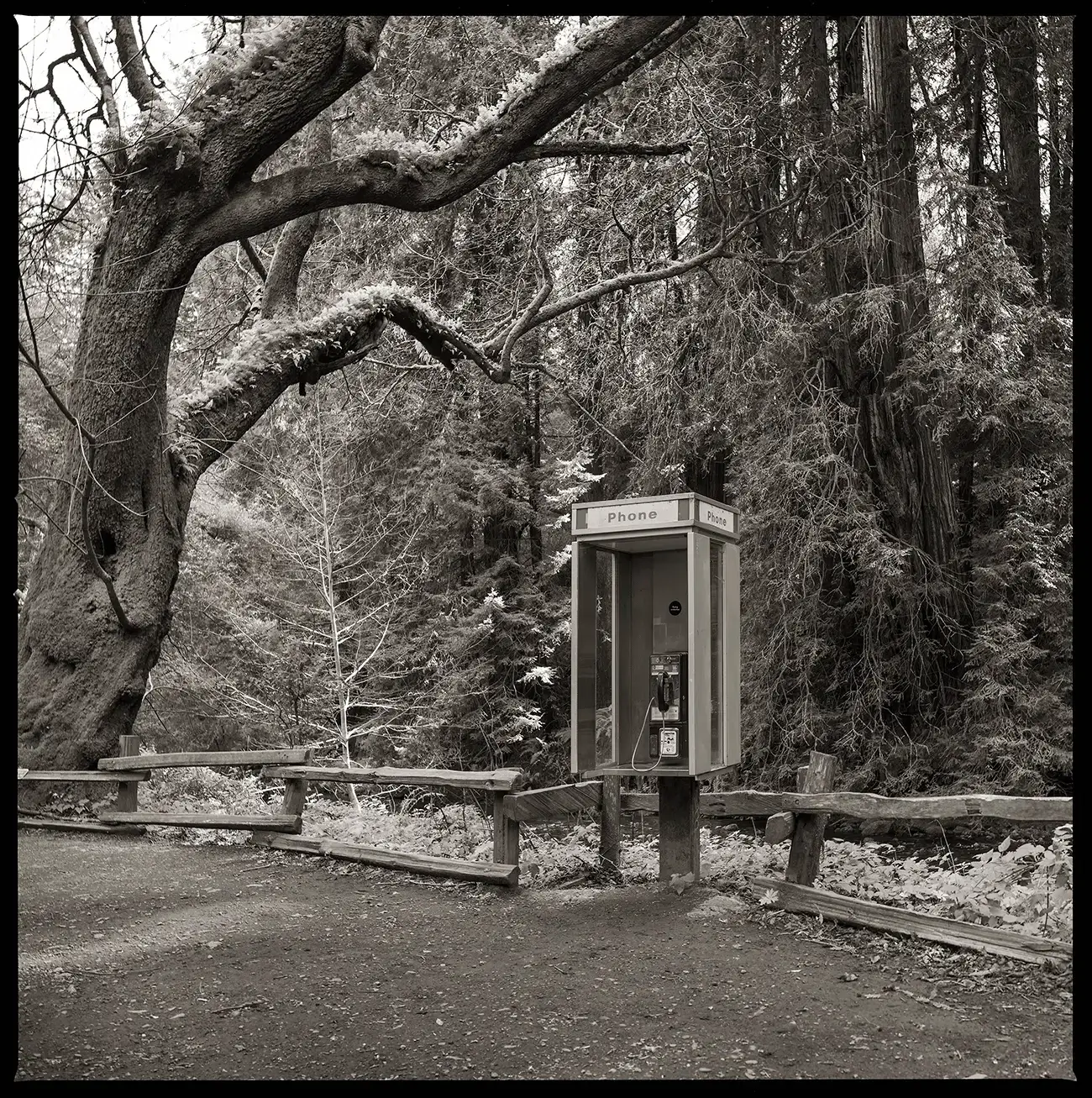
415.388.9904- Muir Woods, Mill Valley, CA 94941 © Eric Kunsman
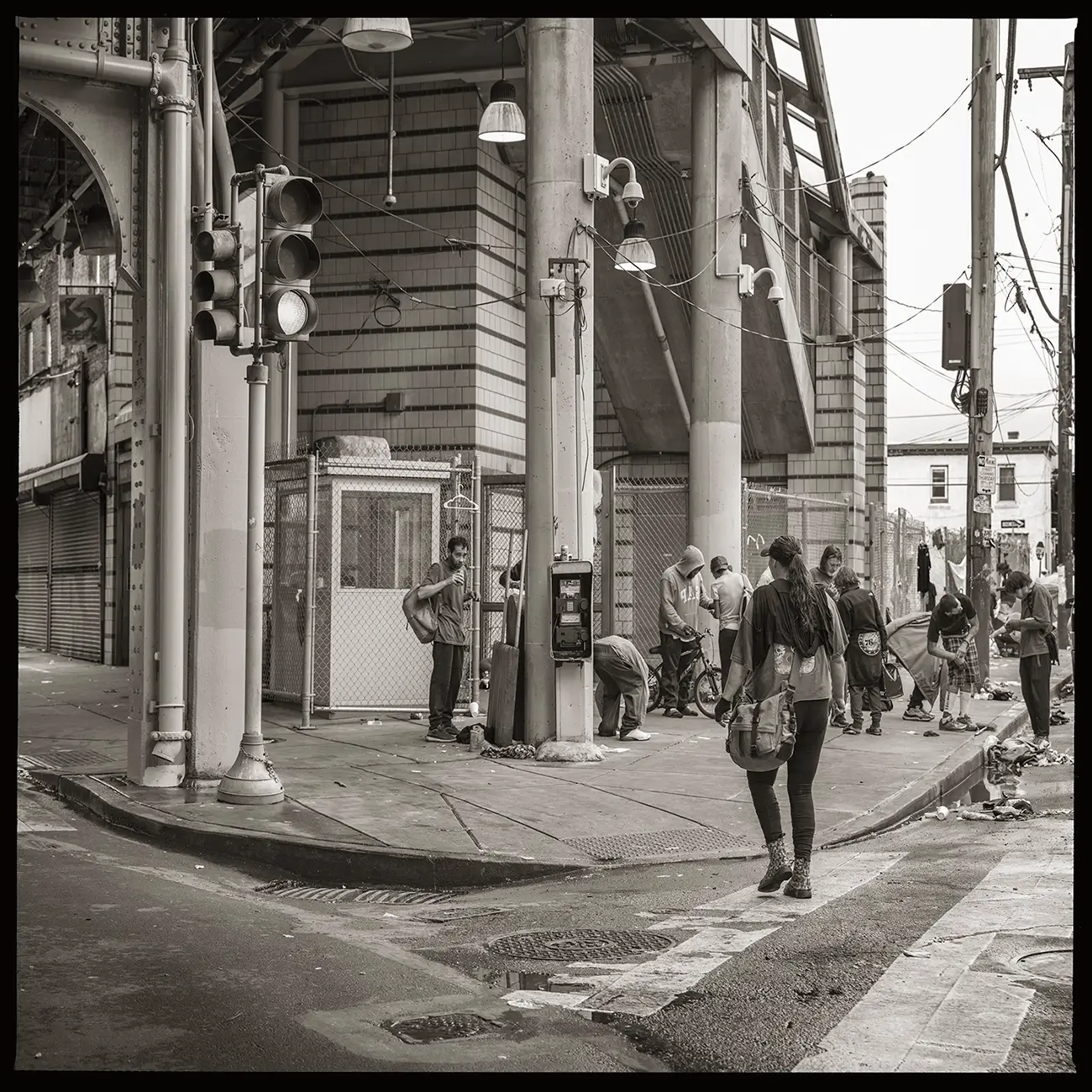
215.739.0708- Somerset Station, 2775 Kensington Ave, Philadelphia, PA 19134 © Eric Kunsman
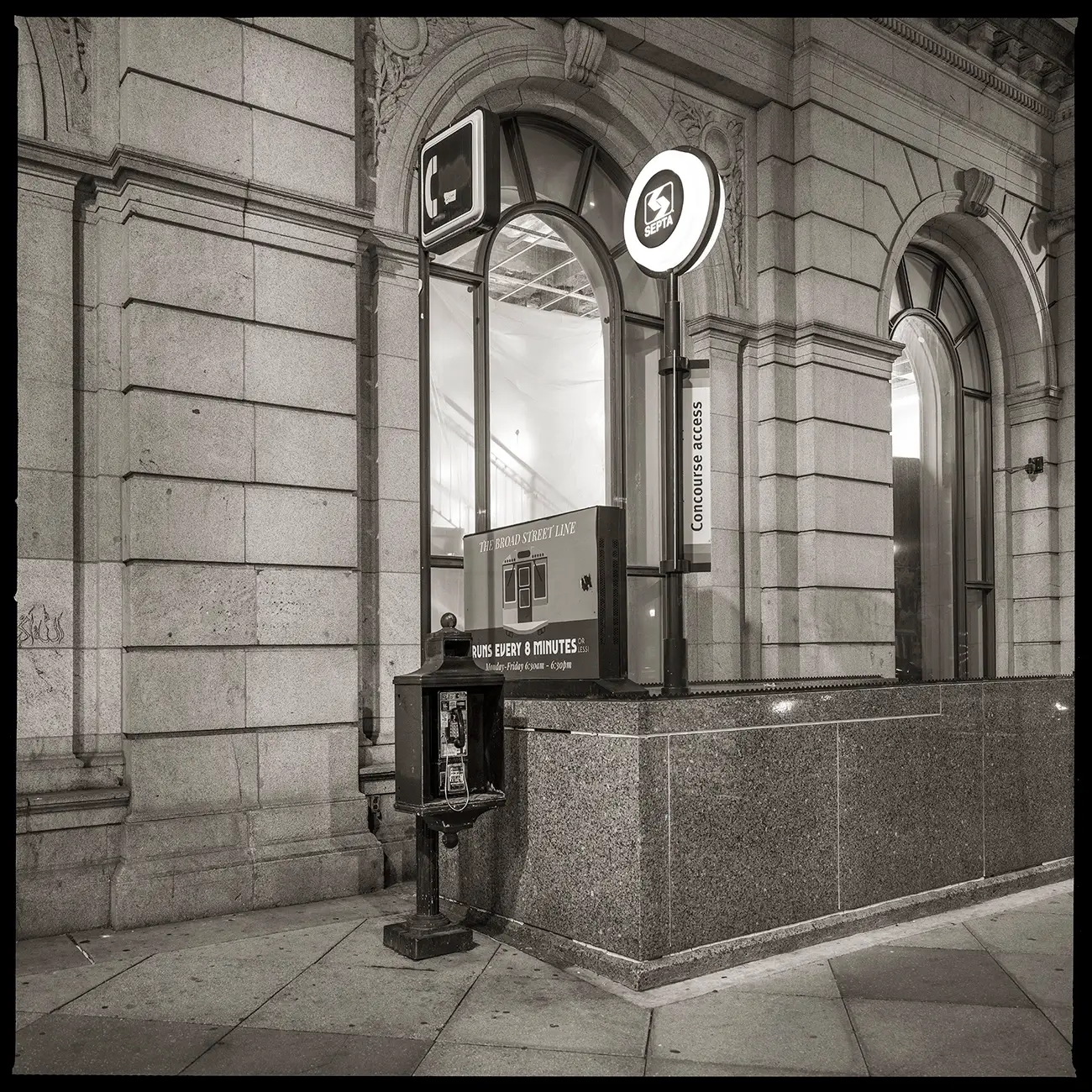
215.854.9289- Land Title Building, 1400 Chestnut Street, Philadelphia, PA 19102 © Eric Kunsman
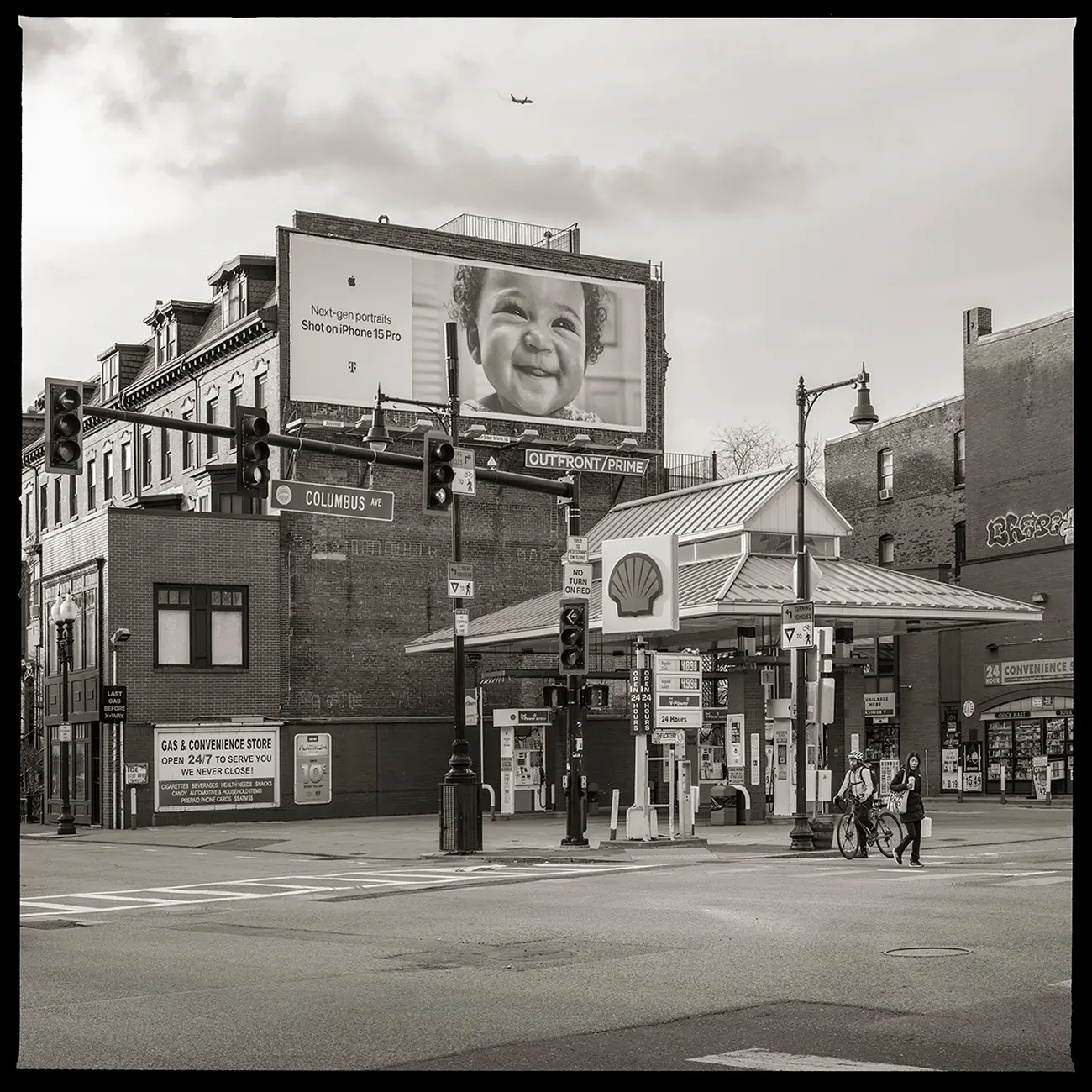
Unknown Number- Shell, 584 Columbus Ave, Boston, MA 02118 © Eric Kunsman
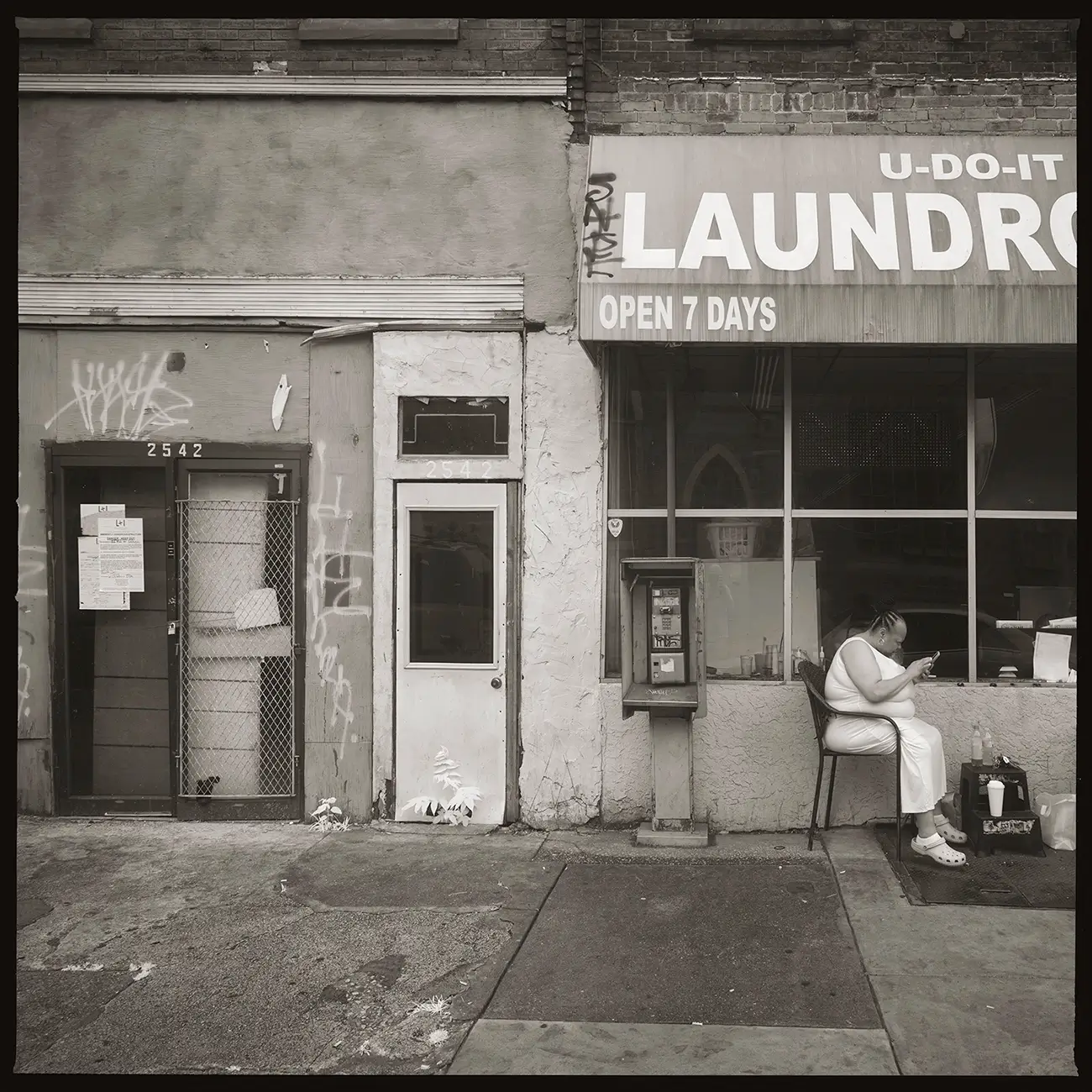
Unknown Number- U-DO-It Laundromat, 2544 W Lehigh Ave Philadelphia, PA 19132 © Eric Kunsman
This depends on the project!
I use an array of large-format cameras (4x5 Wisner Field Camera, Graflex, and 5x7 field camera) and lenses for my more traditional projects. The payphone work has been completed with my Hasselblad 500CM camera, and ninety percent of that series is photographed utilizing the 40mm lens. As for my digital cameras, I work with the Fujifilm GFX 100s and 100s II cameras, along with a few Fujifilm Extended Spectrum cameras with an array of lenses at my disposal.
Which techniques and materials do you prefer?
I am spoiled; I can access any technique or process I want to utilize in my studio. I have a darkroom set up for traditional and alternative processes, allowing me to process my film. I work in many alternative processes but enjoy Platinum/Palladium, Platinotype, Kallitype, and Gum Bichromate the most and have utilized them in my practice. For my digital printing, I work with an array of wide-format machines from Canon and Epson, including two printers with Piezography inks. I can access UV, Eco-Solvent, Dye-Sublimation, Aqueous printers, and all the substrates one could imagine. People often refer to my studio as Willy Wonka’s Chocolate Factory because there is so much under one roof.
However, most of my exhibition prints are photographed on Kodak Portra film and scanned with the Flextight scanners in the studio. I print utilizing the Canon ipf8300 printers or Piezography on Canson Infinity Edition Etching Rag.
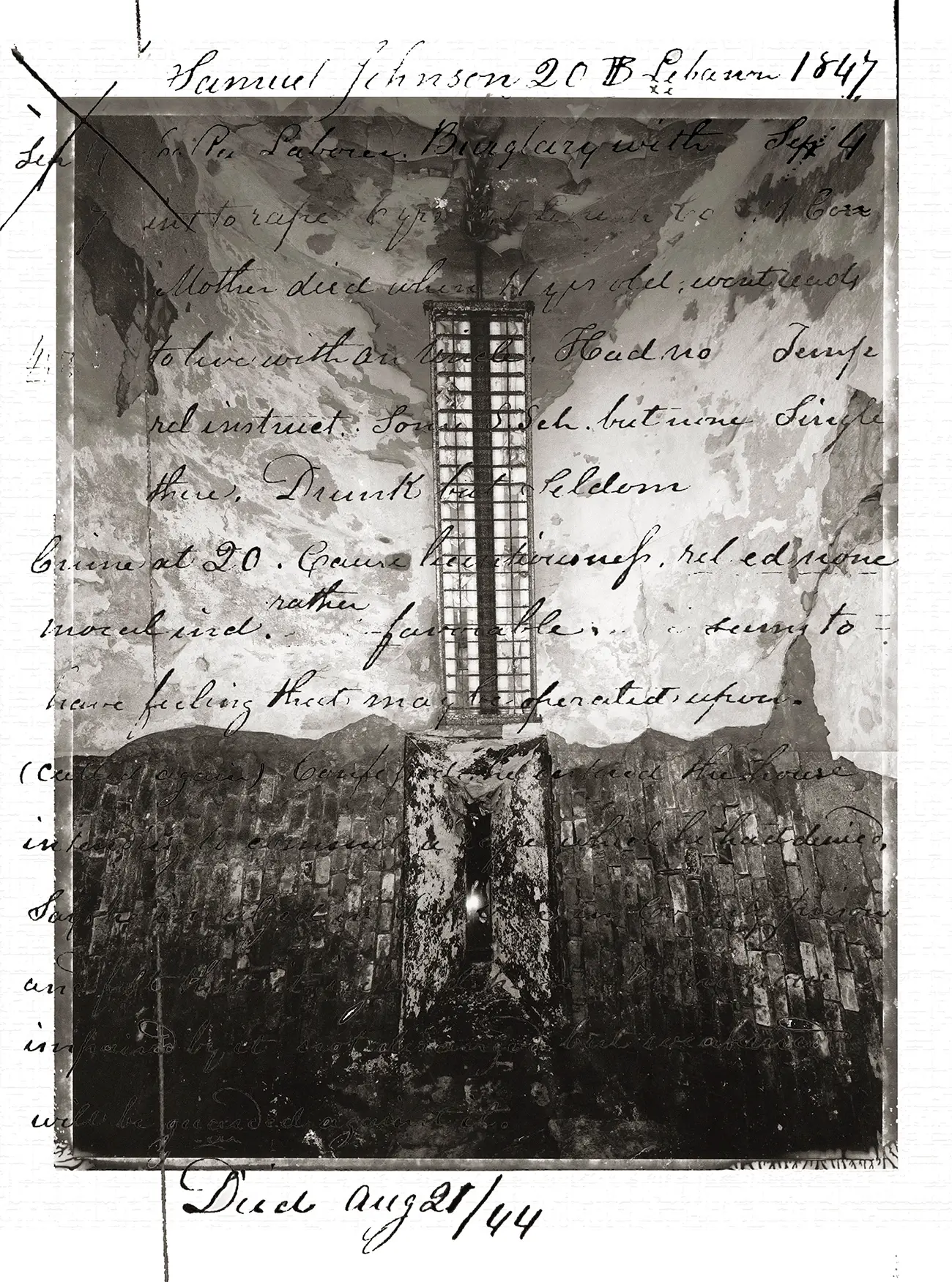
Samuel Johnson © Eric Kunsman
Yes, I believe in implementing the idea of visual hierarchy in my images, which starts at the time of composition. Once I have my images in the digital darkroom (aka Photoshop), I utilize the same techniques of dodging and burning for visual hierarchy as implemented in the darkroom. However, I now have more control than the darkroom through adjustment layers and masking, and 95% of my technique is done with the Curves tool. Ultimately, I wanted to move the viewer's eyes and create the intended dialog as I looked through the viewfinder.
How would you describe your photography style?
If somebody is unfamiliar with my photographs, I describe myself as being either a social documentary photographer or a visual sociologist. The reason why I say visual sociologist now is because my pictures have much more behind them than just being photographs and often have data accompanying them at this point. A few curators have labeled me as a romantic social documentary photographer because I don't hit people over the head, and often, the photographs can stand as individual images that are softer than most social documentary work at this time.
What was the best piece of advice you were given starting out?
You need to work your tail off to make it as a photographer!
What advice would you give someone who would like to become a photographer today?
First and foremost, build YOUR community; it doesn’t have to look like other people’s community.
Secondly, I would give somebody the same advice I would give myself when I was younger. Allow your photographic process to develop on its own and share it as you create the work to learn from other individuals you can have conversations with and even disagreements with. I beat myself up for a few years when I didn't take any photographs because of my studio, but at the same time, I was learning what has informed my work since 2012, which has become essential to the way I am documenting the subjects that I am at this point.
All my decisions, whether correct or wrong, have got me to where I am today, and I am enjoying the community I've been building, whether it's photographers, social scientists, librarians, or the general community. The individuals I engage with daily, even those with minimal conversations, have allowed me to self-reflect and create the body of work I have up until now. I know it sounds generic, but sometimes we cannot overthink the decisions that we're making because no matter what, in the end, they lead us through our life and inform us about our artistic practice as our life has a direct influence on the bodies of work, we all create. So, enjoy the ride and look at what other photographers are developing, but make sure that you are producing work that is important to your concerns and beliefs, and be true to yourself and your values.
What mistake should a young photographer avoid?
Do not feel like you must create a unique vision and look for all of your work from day one. Photography is a long game, and your life's body of work should illustrate the values and experiences you wish to bring to the viewers of your work. It is okay to resurvey a previously completed body of work but put your spin or narrative into your project. Finding what inspires you will allow you to create your narrative.
What are your upcoming projects?
I am currently working on five projects, which keeps me from burning out on a single project. I am working on Felicific Calculus and Life-Lines Throughout the United States, as well as my payphone projects, and I will continue to do so in the foreseeable future. Simultaneously, I have a project titled Before Noon, which focuses on documenting the people and neighborhoods in my studio neighborhood called JOSANA. I am focusing on documenting before noon, which is when daily stress, alcohol, drugs, and the weight of the world tend to hit communities. My two other projects are relatively new and deal with extended-spectrum digital photographs from my travels throughout the United States this summer. The second is a panorama of nature and deals with what the Earth will look like as it starts to heal. The only ones around to observe nature will be the AI robots.
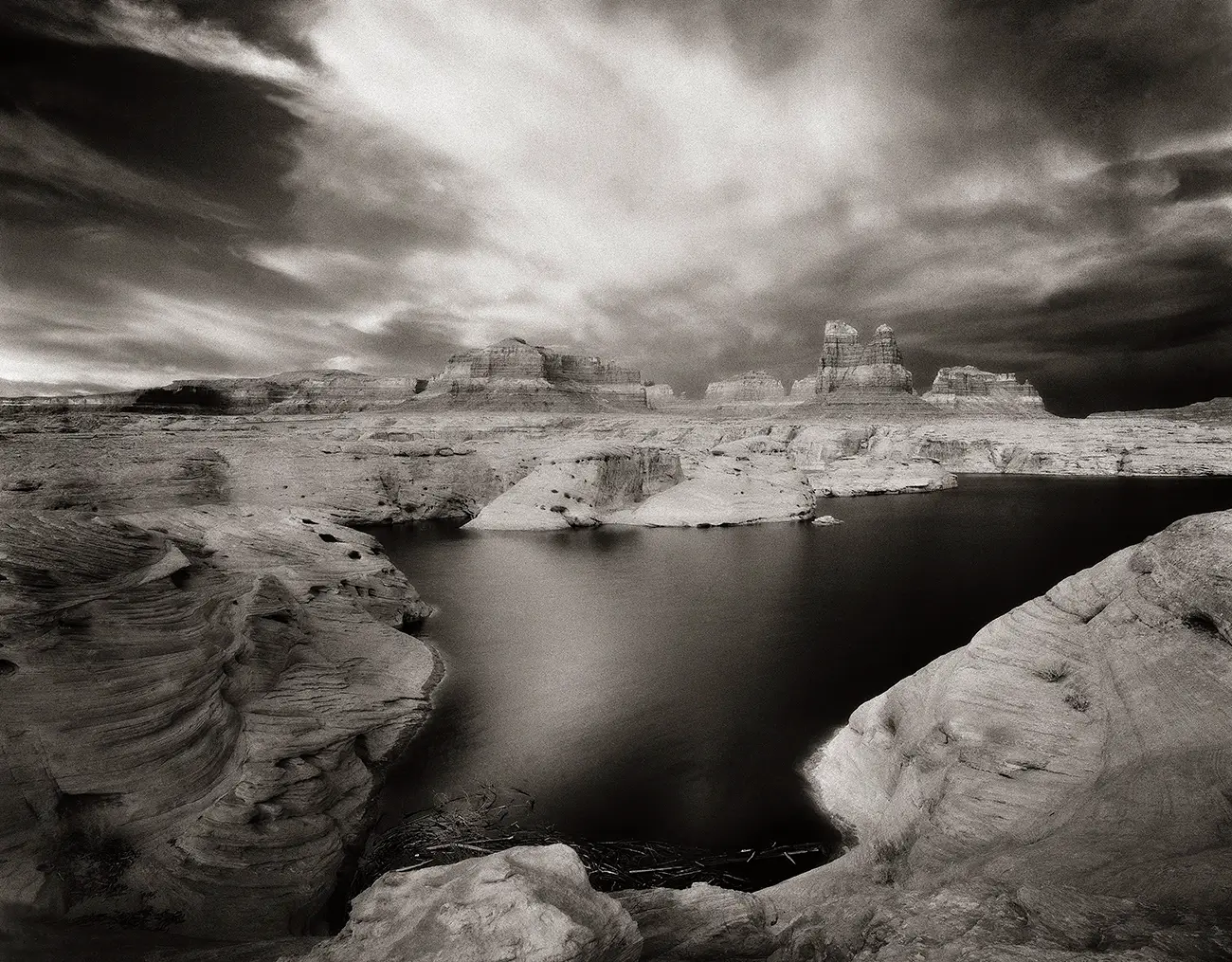
Lake Powell © Eric Kunsman

North Rim, Grand Canyon © Eric Kunsman
It is genuinely photography or nothing; I am fortunate to have photography in my life every day, whether that is teaching at RIT at my studio, Booksmart Studio, or creating my photography.
Anything else you would like to share?
I love collaborating with other photographers and creatives and am always willing to hear from others. Please feel free to reach out to me, and I hope to meet some of you in person at portfolio reviews.
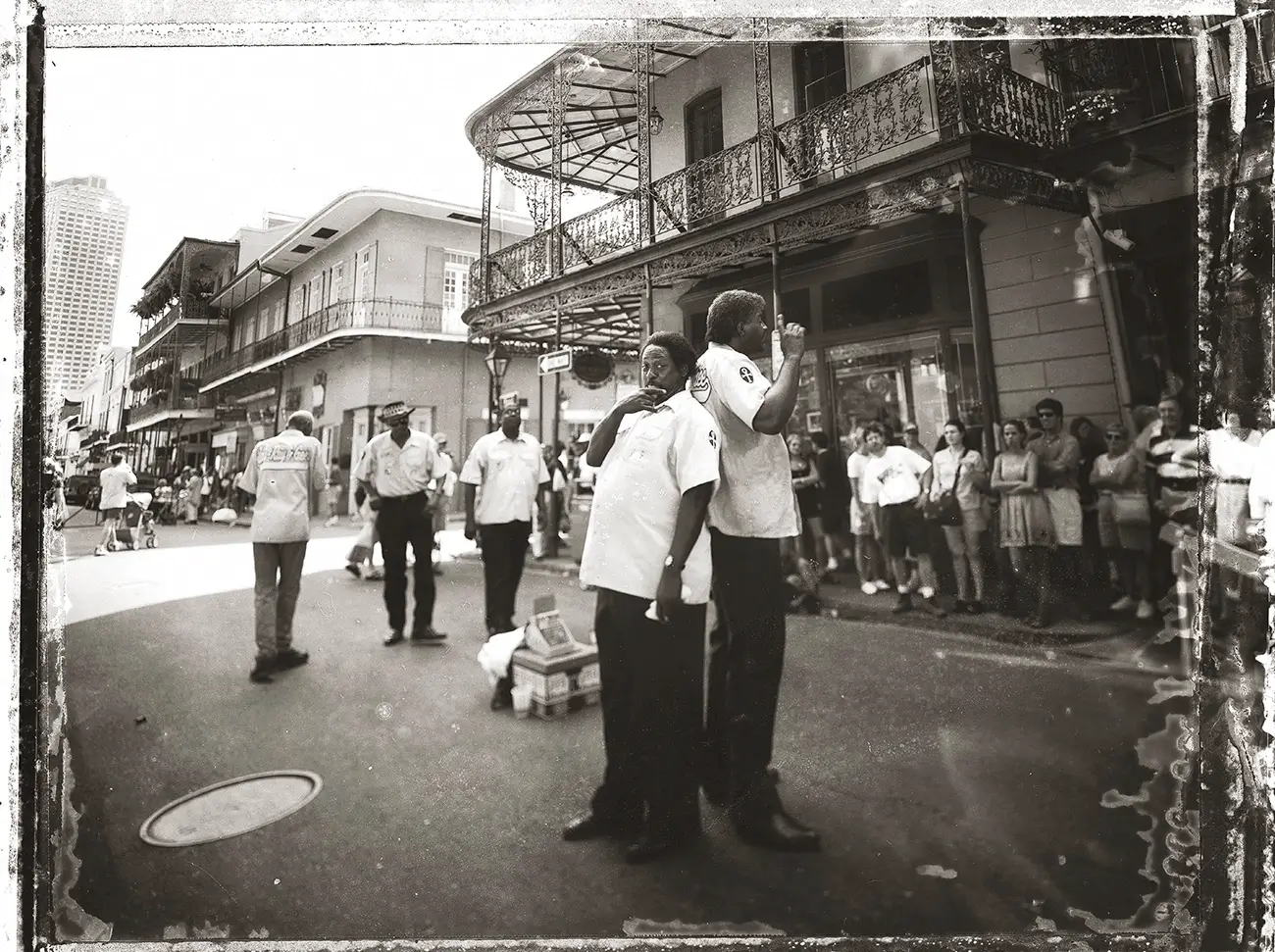
Street Performers, New Orleans © Eric Kunsman
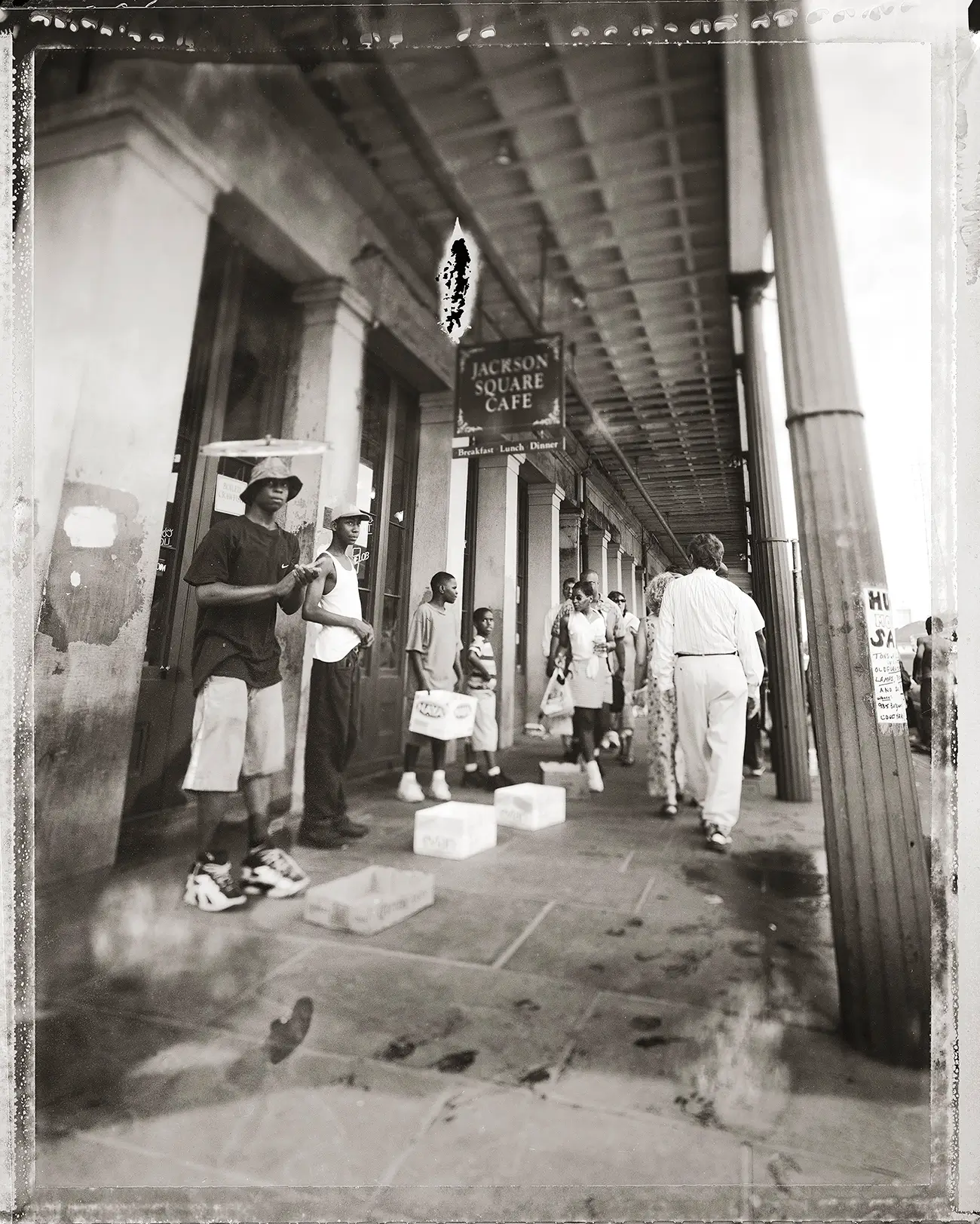
Tappers, New Orleans © Eric Kunsman
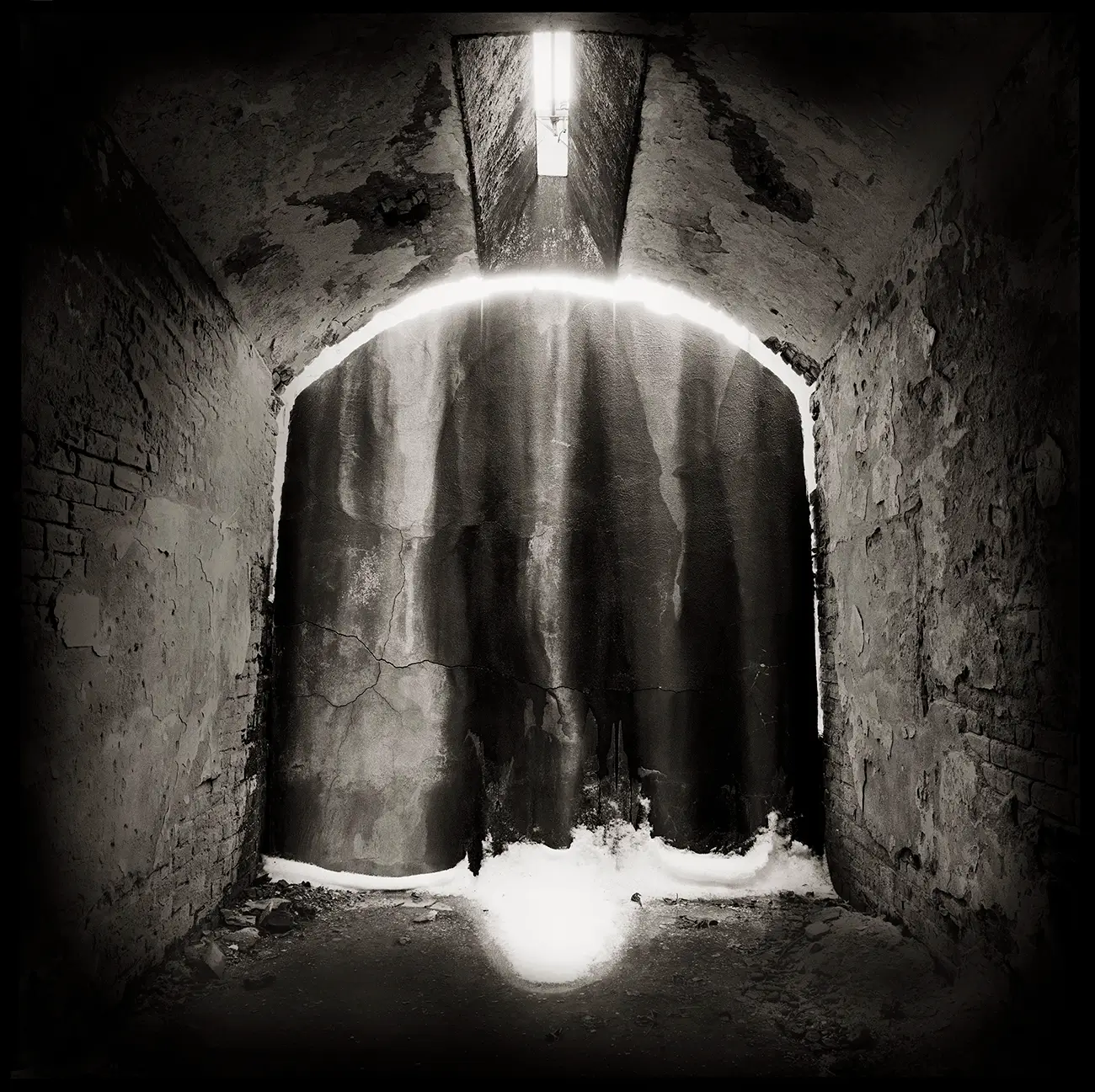
The Drapery © Eric Kunsman
